 Whether you manage communications professionals or want to believe there’s runway for your own growth, there are 5 components of talent development for communications professionals that will tell you whether you’re in a world-class organization that values and grows talent — or, um, let’s just say someplace else.
Whether you manage communications professionals or want to believe there’s runway for your own growth, there are 5 components of talent development for communications professionals that will tell you whether you’re in a world-class organization that values and grows talent — or, um, let’s just say someplace else.
If you want an easy way to remember them, think about the need to constantly A.D.A.P.T. to the needs of the business and connect them with the needs of communications professionals. Here they are:
A rticulate competencies. Saying or hearing something like, “You need to get better with strategy” without specific examples or coaching doesn’t exactly give anyone confidence that they have – or can get – what it takes to deliver it. Articulating competencies means that communications leadership has selected a finite number of disciplines that matter most for the business, and for communications professionals’ growth. Somewhere between 10 and 15 is a good place to start, without overwhelming communications teams, leaders and HR partners.
D escribe progression. It’s not enough to simply say what the competencies are; world class organizations take that critical next step and describe what it looks like to progress or grow within them. From having basic capabilities in a given competency to mastery – and teaching it to others – you should have anywhere from 3 to 5 levels of progression identified. Otherwise, it can lead to lots of different opinions of what – for example – mastery looks like versus a more basic capability.
A lign employee & manager. Having identified competencies and how people can progress through them, managers and employees need to level set where the employee is on the path for growth. That means both employee and manager need to evaluate the employee against the specifics of the competencies, and have a conversation to discuss differences of opinions, needs for demonstration of specific competencies and action plans to set a clear course for development.
P rescribe training & development opportunities. Training and development comes in all shapes and sizes, but every employee should have specific actions to either demonstrate or attain the “next-level” set of skills. Whether it’s new work assignments, cross-team assignments, or a range of formalized in-classroom or web training, it’s the specifics that matter.
T alk. Developing talent isn’t a one time, or even once-a-year activity. The best talent managers are those who set a course for employees, and provide regular coaching sessions and check-ins for their team members to discuss how their development is coming. That kind of connectivity will make employees think twice before taking the next head-hunter call, or — minimally — provide another barrier to exit when, and if, things become competitive with another prospective employer.


